Digital Exclusion
Broadly defined, digital exclusion is where a section of the population have continuing unequal access and capacity to use Information and Communications Technologies (ICT) that are essential to fully participate in society (Schejter, Harush, Rivk, & Tirosh, 2015).
There are a number of barriers to digital inclusion which include; lack of digital skills, cost, motivation and confidence.
Types of Digital Exclusion
There are multiple ways people can be digitally excluded. To be effective, any work needs to begin by identifying which barrier(s) need to be tackled. This section outlines each of the five key barriers and summarises:
- What has been done to date in Darlington to address the issue
- Any gaps in provision identified
- Potential interventions to be considered
It is worth noting that all barriers to digital inclusion are more likely to be faced by groups who have also been impacted negatively by the Covid-19 pandemic.
Not everyone can go online, for example because they live in an area with poor connectivity or cannot afford Wi-Fi or data. Data suggests that of non-internet users, 36% of users are excluded due to the cost. Similarly, a third (32%) of all smartphone users said that when they go online to complete tasks, they do this as quickly as possible to avoid using up too much data.
What has been done so far?
- The council has installed Wi-Fi in the Town Centre and in several public buildings, such as the libraries, Dolphin Centre, Hippodrome and Town Hall. There is also free Wi-Fi in sheltered living accommodation shared spaces and on Arriva buses.
- Work been undertaken to ensure the council website does not use up too much of users’ data.
- Devices loaned from the library in the ‘Let’s Do Digital’ scheme
A range of devices can now be used to go online, but an increasing proportion (now 21%) of internet users access the internet only via a smartphone. A majority of smartphone-only internet users did not feel disadvantaged by this, but for some, accessing the internet exclusively via a smartphone was not necessarily by choice: 26% of smartphone-only internet users according to Ofcom in 2021 said they felt disadvantaged by this.
A large majority (88%) of all smartphone users had completed a form or application on their mobile phone and a quarter (26%) were doing so weekly. But 71% of all smartphone users agreed that completing forms and working on documents was more difficult on a smartphone than on a laptop or desktop. Smartphone-only internet users were less likely than average to agree, but even so, more than half (55%) agreed.
The association of greater difficulty in completing such activities on a smartphone has remained consistent, with no change since 2020. But despite this, an increasing number of people are using their smartphones to complete a form or application; the proportion who had ever done this rose from 83% in 2020 to 88% in 2021.
What’s been done so far?
- Public desktop computers are available in libraries and the customer contact centre however:
- contact centre computers are specifically for accessing council services
- library computers can only be used for free for a limited time period
- 230 laptops were delivered to disadvantaged school pupils who met various criteria throughout the pandemic
- The Lifeline service has purchased 5 devices for each sheltered housing scheme for residents to borrow
- The Let’s Do Digital ran a scheme with 10 iPads for people to borrow from the library for 6 weeks
- Donated devices have been refurbished and given to:
- 5 phones were donated to care leavers
- 4 laptops to people who have been through the device borrowing scheme
- 1 iPad to a person who completed the borrowing scheme
- 24 laptops were given to Coder Dojo to improve digital skills for young people
- 6 laptops have been given to learners via Learning and Skills
The 5 key skills required for digital inclusion are:
- communicating
- handling information and content
- transacting
- problem solving
- being safe and legal online
From the Internet User Classification data it seems that the communicating aspect is less of an issue in Darlington than the other four digital skills. The passive and uncommitted user group is the most represented in Darlington and tend to mainly use the internet for social media.
One way of looking at this is by using breadth of use analysis. This defines three categories of internet user, based on the range of activities they complete online:
-
‘Narrow’ internet users are defined as those who had ever undertaken between one and four of the 13 online activities we asked about. This accounted for 29% of internet users.
-
‘Medium’ internet users had ever undertaken 5-8 activities, and this accounted for 40% of internet users.
-
‘Broad’ internet users had ever undertaken 9-13 of the activities, and this accounted for 28% of internet users.
Narrow internet users were more likely than average to be aged 65+ and in DE households. In contrast, broad internet users were more likely to be aged 25-44 and in ABC1 households.
What’s been done so far?
- DBC Learning and Skills service offer free ICT courses for residents aged 19+ who have lived in the UK for three years. Current courses are online safety, Intro to Microsoft Office and Intro to Social Media Marketing.
- Training has been provided to all sheltered living accommodation scheme managers to support residents with digital support.
- Unforgettable Experiences, a new charity operating in Darlington to enhance older people’s life experiences, are recruiting volunteers as Digital Champions.
